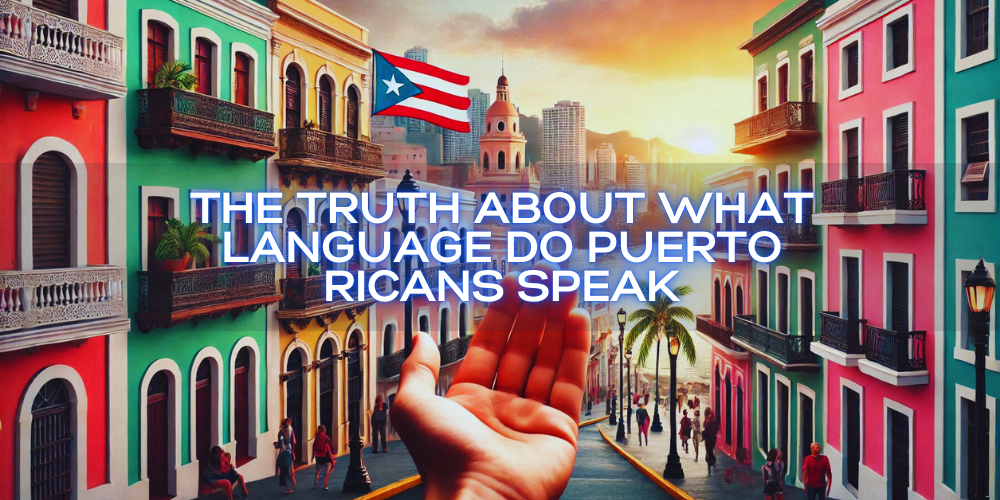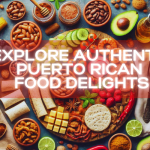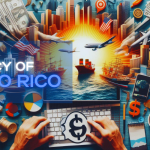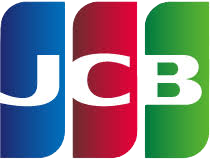Puerto Rico, a vibrant Caribbean island known for its rich culture, lush landscapes, and warm hospitality, also boasts a fascinating linguistic heritage. For many, the question arises: What language do Puerto Ricans speak? The answer may seem straightforward, but Puerto Rico’s linguistic identity is deeply intertwined with its history, culture, and political relationship with the United States. In this comprehensive guide, we’ll explore the languages spoken in Puerto Rico, their origins, usage, and cultural significance.
A Brief Overview of Languages in Puerto Rico
The primary languages spoken in Puerto Rico are Spanish and English. Spanish is the dominant language and serves as the primary mode of communication for most residents. English, while an official language alongside Spanish, is less commonly spoken in everyday life. However, the linguistic reality of Puerto Rico is shaped by historical, cultural, and political factors that go beyond just these two languages.
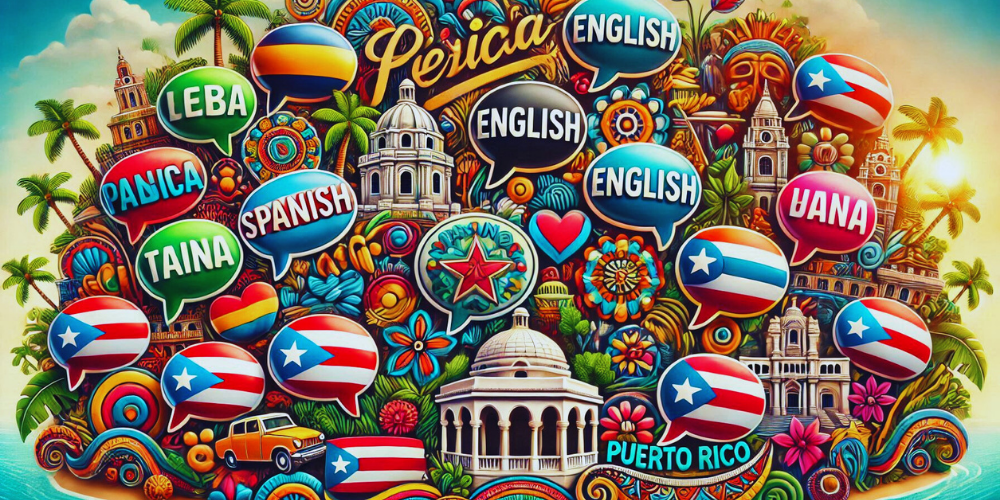
The History Behind Puerto Rico’s Languages
1. Taíno: The Indigenous Language
Before Spanish colonization in 1493, Puerto Rico was inhabited by the Taíno people, an Indigenous group who spoke the Taíno language. Taíno was an Arawakan language, and while it is no longer spoken today, its influence remains in Puerto Rican culture and vocabulary. Words like huracán (hurricane), barbacoa (barbecue), and canoa (canoe) are derived from Taíno.
2. Spanish Colonization and the Arrival of Spanish
After Christopher Columbus arrived in Puerto Rico in 1493, the Spanish established control over the island. Spanish became the dominant language as colonization expanded, and the Taíno language gradually disappeared. Over the centuries, Spanish evolved in Puerto Rico, blending with other influences to create the distinct Puerto Rican Spanish spoken today.
3. The Influence of African Languages
During Spanish colonization, African slaves were brought to Puerto Rico to work on plantations. While African languages did not survive in their entirety, their influence can be seen in Puerto Rican music, cultural expressions, and certain loanwords incorporated into the local vernacular.
4. U.S. Control and the Introduction of English
In 1898, Puerto Rico became a U.S. territory after the Spanish-American War. This marked a significant shift in the island’s linguistic landscape. The U.S. government introduced English as part of its efforts to Americanize Puerto Rico. English was imposed in schools, government, and official documents, but Spanish remained the language of everyday communication for the majority of Puerto Ricans.
Spanish in Puerto Rico: The Dominant Language
1. Puerto Rican Spanish
The Spanish spoken in Puerto Rico is not identical to the Spanish spoken in Spain or other Latin American countries. Puerto Rican Spanish has unique features, including:
- Vocabulary Influences: Borrowed words from Taíno, African languages, and English.
- Pronunciation: Puerto Ricans often drop the final s in words (e.g., estás becomes etá).
- Slang (Jerga): Rich colloquial expressions like chévere (cool), guagua (bus), and janguear (to hang out).
2. Everyday Use of Spanish
Spanish is the primary language spoken in homes, schools, businesses, and social settings in Puerto Rico. Most Puerto Ricans are monolingual Spanish speakers or have limited English proficiency. Spanish is deeply embedded in the island’s identity, literature, music, and traditions.
English in Puerto Rico: The Secondary Language
1. Official Status of English
English was declared an official language of Puerto Rico alongside Spanish in 1902. It is used in government proceedings, federal courts, and certain educational institutions. However, its role as an official language is often symbolic, as most Puerto Ricans do not use English as their primary language.
2. Bilingualism and English Proficiency
While English is taught in schools, proficiency levels vary widely. According to the U.S. Census Bureau, only about 20% of Puerto Ricans are fluent in English, and many use it primarily in professional or tourist-oriented settings.
Factors affecting English proficiency include:
- Educational System: English is a mandatory subject, but the quality of instruction varies.
- Generational Differences: Younger Puerto Ricans are often more comfortable with English due to greater exposure to American media and internet resources.
- Economic Factors: Proficiency is higher in urban areas and among those working in tourism or multinational companies.
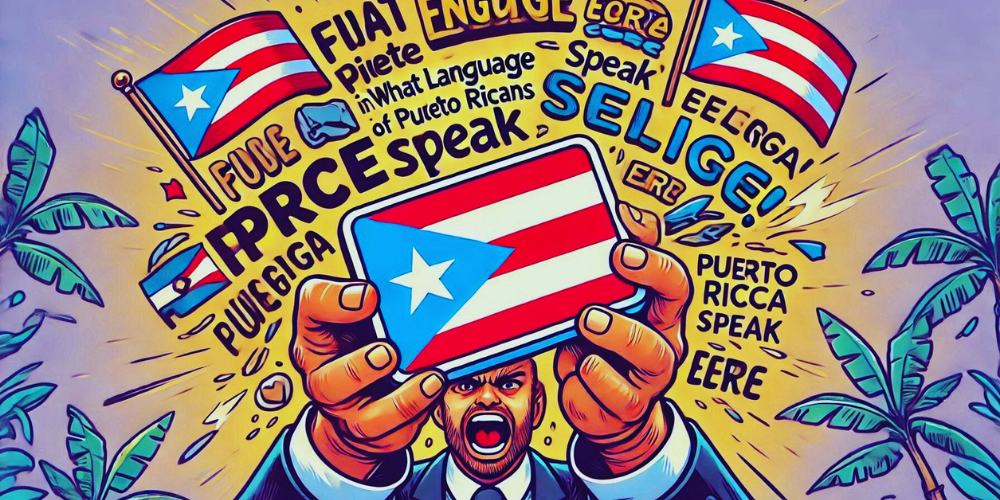
How Do Puerto Ricans Use Both Languages?
1. Spanish as the Heart of Culture
- Spanish is used for artistic expression, literature, and music. From salsa lyrics to novels by celebrated Puerto Rican authors like Luis Rafael Sánchez, Spanish is integral to cultural identity.
- It is also the language of emotional connection, used in family conversations and community gatherings.
2. English in Education and Business
- English is more prominent in private schools, universities, and workplaces, especially those with international ties.
- It is essential for Puerto Ricans who migrate to the U.S., as it helps them navigate American society.
3. Code-Switching
Many Puerto Ricans are adept at code-switching, or alternating between Spanish and English within a conversation. For instance:
- “Voy a llamar al cliente en un rato, but I need to finish this report first.”
This linguistic flexibility reflects Puerto Rico’s bicultural reality.
Challenges and Controversies Around Language in Puerto Rico
1. Educational Challenges
- English is a required subject in schools, but the effectiveness of English instruction is debated. Critics argue that English should be taught more intensively to improve fluency, while others believe it threatens the primacy of Spanish.
2. Political Implications
Language is deeply tied to Puerto Rico’s political status as a U.S. territory.
- Statehood Advocates: Some argue that adopting English more widely could bolster Puerto Rico’s chances of becoming a U.S. state.
- Cultural Preservationists: Others fear that an emphasis on English could erode Puerto Rico’s cultural identity rooted in Spanish.
3. Economic Impact
English proficiency is increasingly important in the global economy. Puerto Ricans fluent in English often have better job opportunities, especially in tourism, technology, and international business sectors.
Other Languages and Dialects in Puerto Rico
While Spanish and English dominate, Puerto Rico’s linguistic tapestry includes other influences:
- Taíno Words: Though the Taíno language is extinct, certain words remain in everyday use.
- Creole Languages: Small communities with African ancestry may use Creole expressions.
- Immigrant Languages: Immigrant communities contribute languages like Chinese, Italian, and Arabic.
How Language Shapes Puerto Rican Identity
Language is more than a means of communication in Puerto Rico; it is a cornerstone of identity.
- Spanish: Represents resistance to colonization and a connection to Puerto Rico’s heritage.
- English: Symbolizes the island’s political ties to the U.S. and access to global opportunities.
Puerto Ricans navigate these dual identities, finding pride in their linguistic and cultural adaptability.
Practical Tips for Visitors and Expats in Puerto Rico
1. Learning Spanish
Visitors will have a richer experience if they learn basic Spanish phrases. Most locals appreciate the effort, even if they speak some English.
2. Navigating English-Friendly Areas
English is more commonly spoken in:
- Tourist hubs like San Juan, Ponce, and Rincon.
- Resorts, hotels, and international businesses.
The Future of Language in Puerto Rico
Puerto Rico’s linguistic future will likely continue to balance Spanish and English. Factors influencing this balance include:
- Globalization: Increased use of English due to the internet, media, and business.
- Cultural Resilience: Strong efforts to preserve Spanish as a cultural anchor.
Final Thoughts: A Unique Linguistic Blend
So, what language do Puerto Ricans speak? The truth is a complex interplay of Spanish and English, shaped by history, culture, and politics. While Spanish remains the dominant and deeply cherished language, English plays a growing role in education, business, and international relations. This bilingualism reflects Puerto Rico’s unique position as a cultural bridge between Latin America and the United States.
Whether you’re visiting or planning to settle in Puerto Rico, understanding this linguistic dynamic will enhance your appreciation of the island’s rich heritage and vibrant people.
Would you like more details about Puerto Rican Spanish, bilingual education, or practical language tips for travel?

